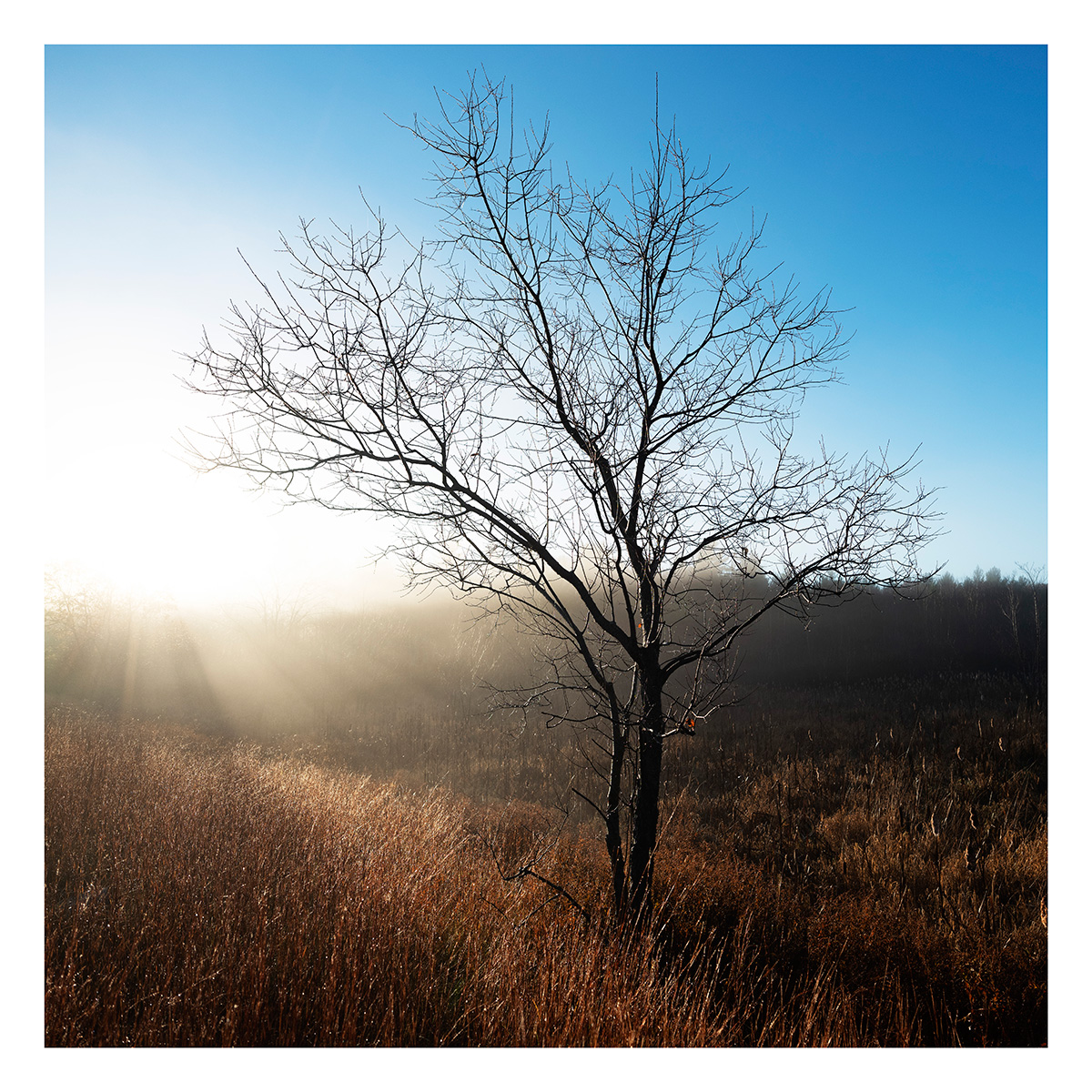Grand view: A first look at the Fujifilm GFX 50R
A review of the Fujifilm GFX 50R medium-format rangefinder-style camera
11.14.2018
I recently had the opportunity to have hands-on experience with a pre-production model of the Fujifilm GFX 50R 51.4-megapixel medium-format rangefinder-style camera. Along with the body I received three Fujinon lenses: a GF23mmF4 R LM WR (approximately equivalent to an 18mm in 35mm format), a GF32-64mmF4 R LM WR (a 25-50mm equivalent) and a GF110mmF2 LM WR (an 85mm equivalent). These all range between $2,300 and $2,800 at full retail price.
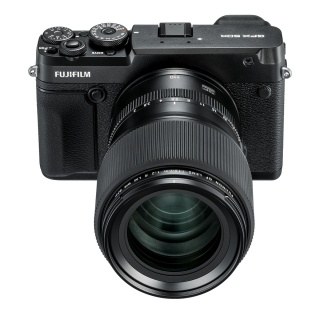
Because this was a pre-production model, I’m reporting on my general user experience with the design and functions. I had great fun working with this camera and was impressed with the results. One of my favorite features is the size of the viewfinder. I remember the days when I was accustomed to looking through medium-format film cameras and then switched over to 35mm digital cameras—the reduction of viewing area was significant. This new Fujifilm GFX 50R is a delight to look through, taking me back to that roomy viewfinder experience.
I loved the soft quality and dreaminess of the bokeh that the GF110mmF2 lens produced (below). Having worked with 10- and 25-megapixel cameras for many years, the resolution of the 50-megapixel capture amazed me, revealing detail in the veins of the leaves in a tiny portion of the image.
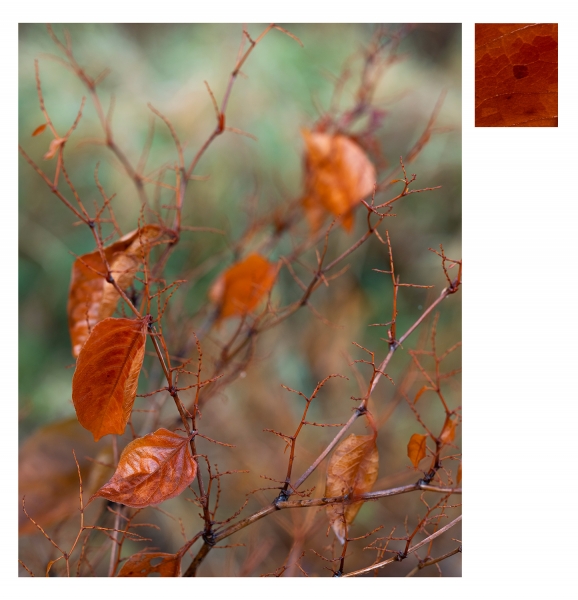
For this photograph, the camera was tripod-mounted and set at 1/25 second at f/4, ISO 250. Above right: With its 50-megapixel resolution, the GFX can reveal detail in the veins of the leaves in this .001 portion of the full image.
The Fujifilm GFX 50R can handle a strongly backlit scene. On close examination of an image of a dew-soaked tree and the rising sun, I was amazed to see essentially no color fringing. I was able to get a dramatic image with strong visual impact and no chromatic aberration.
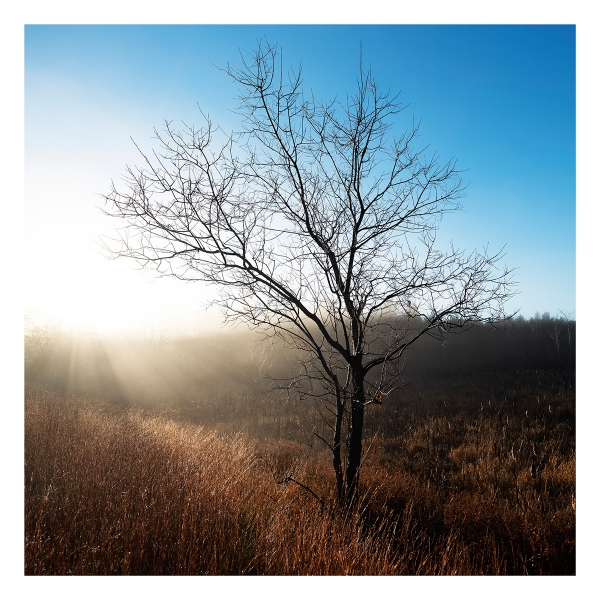
This dew-soaked tree is strongly backlit from the rising sun. When I zoomed in on areas of the file in Photoshop, there was no chromatic aberration.
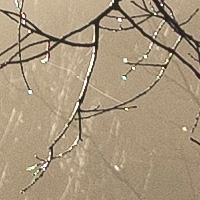
This 200x200-pixel segment shows how well the GFX 50R camera and GF23mmF4 lens combination performs in conditions ripe for fringing.
The autofocus feature was accurate, quick, and responsive. The standard ISO range is 100 to 12,800 with an extended range of 50 to 102,400. Yes, ISO 102,400 has a lot of noise; however, it will allow you to get images you would not otherwise be able to obtain.
The LCD monitor on the back of the camera moves in two directions, up or down, which is helpful when you’re photographing in landscape orientation and holding the camera overhead or down low. In a portrait orientation you won’t have the same advantage.
While I enjoyed capturing images with the camera handheld and tripod mounted, I did take issue with the ergonomic design. I have large hands and found it difficult to hold onto the camera (3.5 pounds with the 23mm lens) for extended lengths of time. I think it would feel better with more grip in the front.
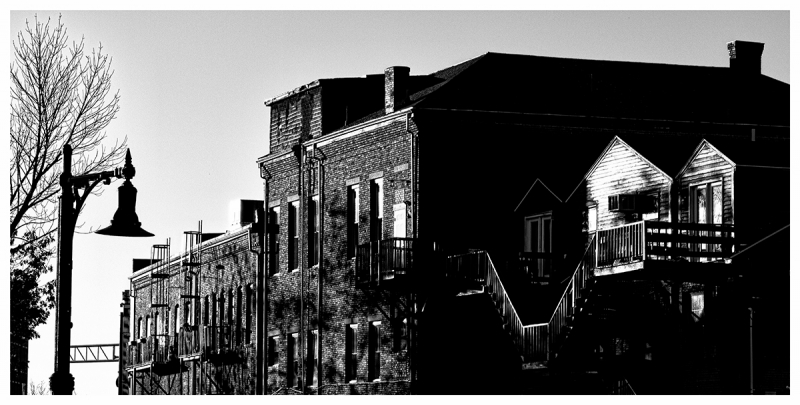
This dramatic, high-contrast scene was photographed using the Fujinon GF110mmF2 lens and converted to black-and-white with Topaz Labs B&W Effects.
There are quite a few buttons on the back and many menu options for the various settings, so users will want to set aside time to practice and get familiar with everything. You really don’t want to get in the field and be expected to produce images only to find yourself hunting for a particular setting.
At $4,500 for the body, this is a serious financial commitment, but if you plan to make large prints it offers a serious advantage in image capture size as well as image quality.
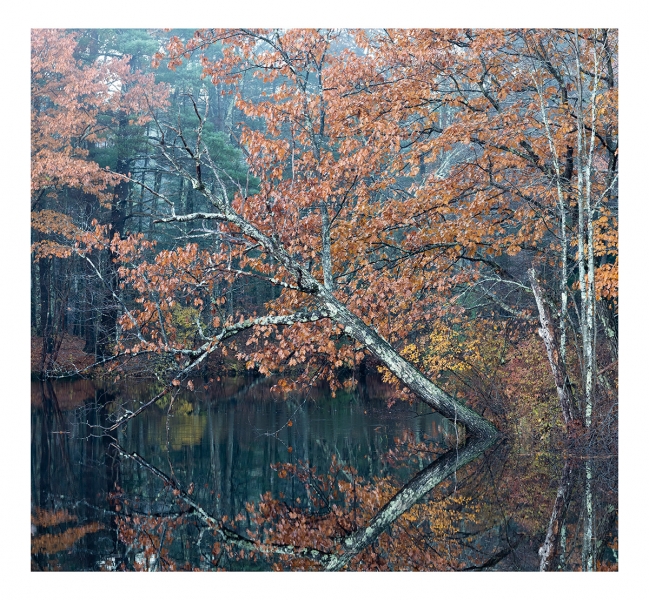
The fall foliage provided abundant subject matter for the Fujifilm GFX 50R.
Don Chick is a Professional Photographer contributing editor. He owns Chick Photography in Rochester, New Hampshire.

